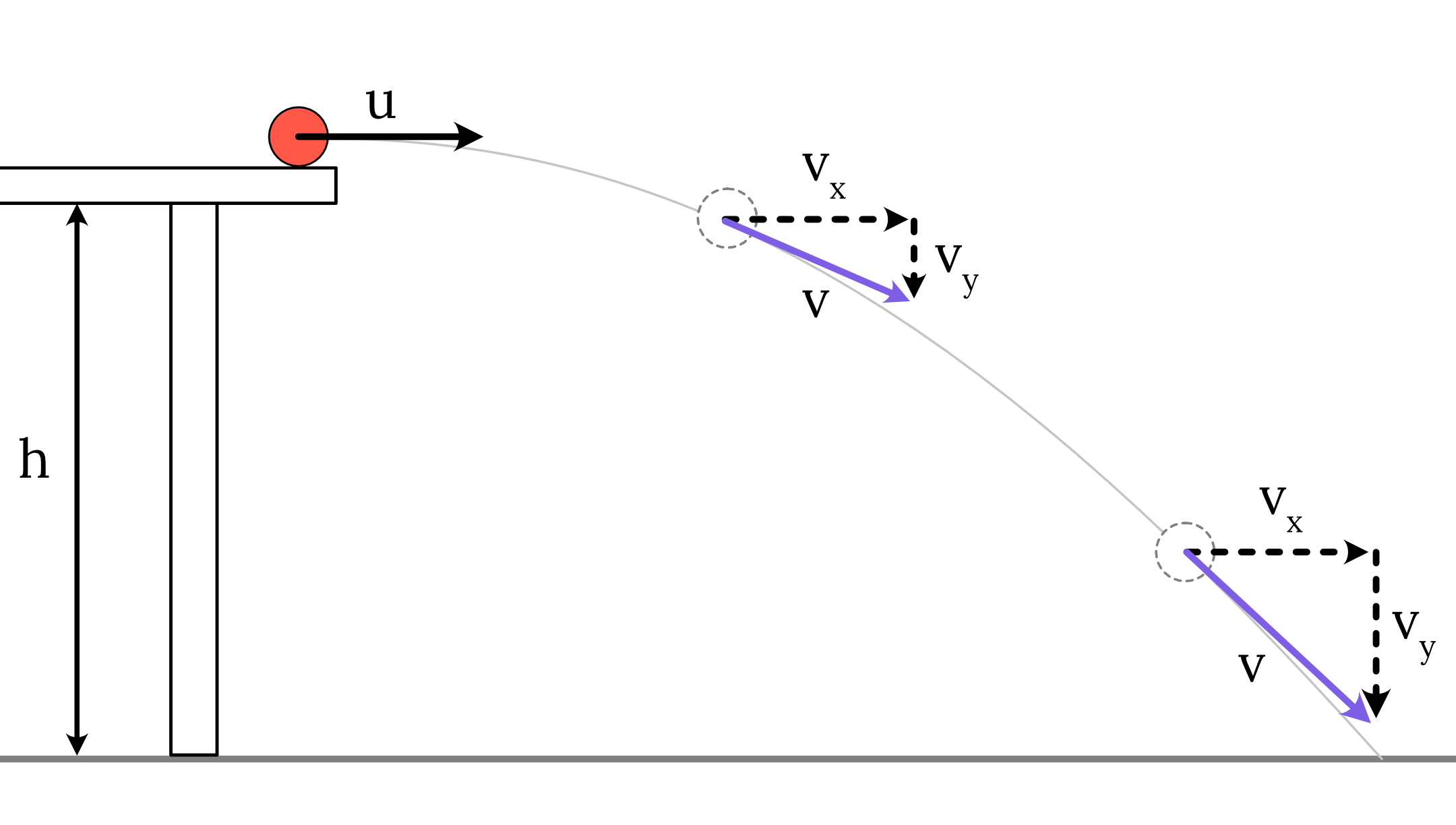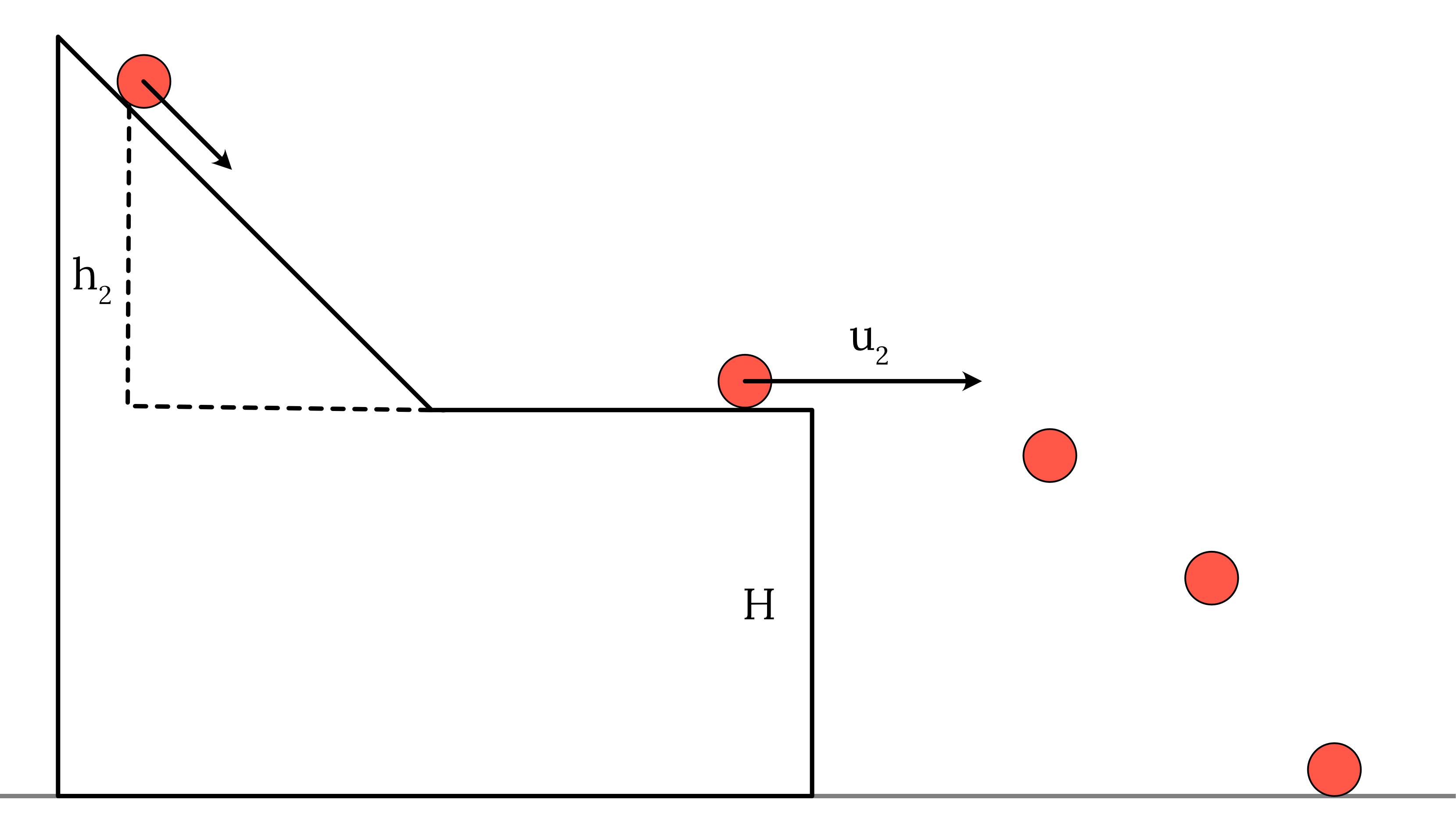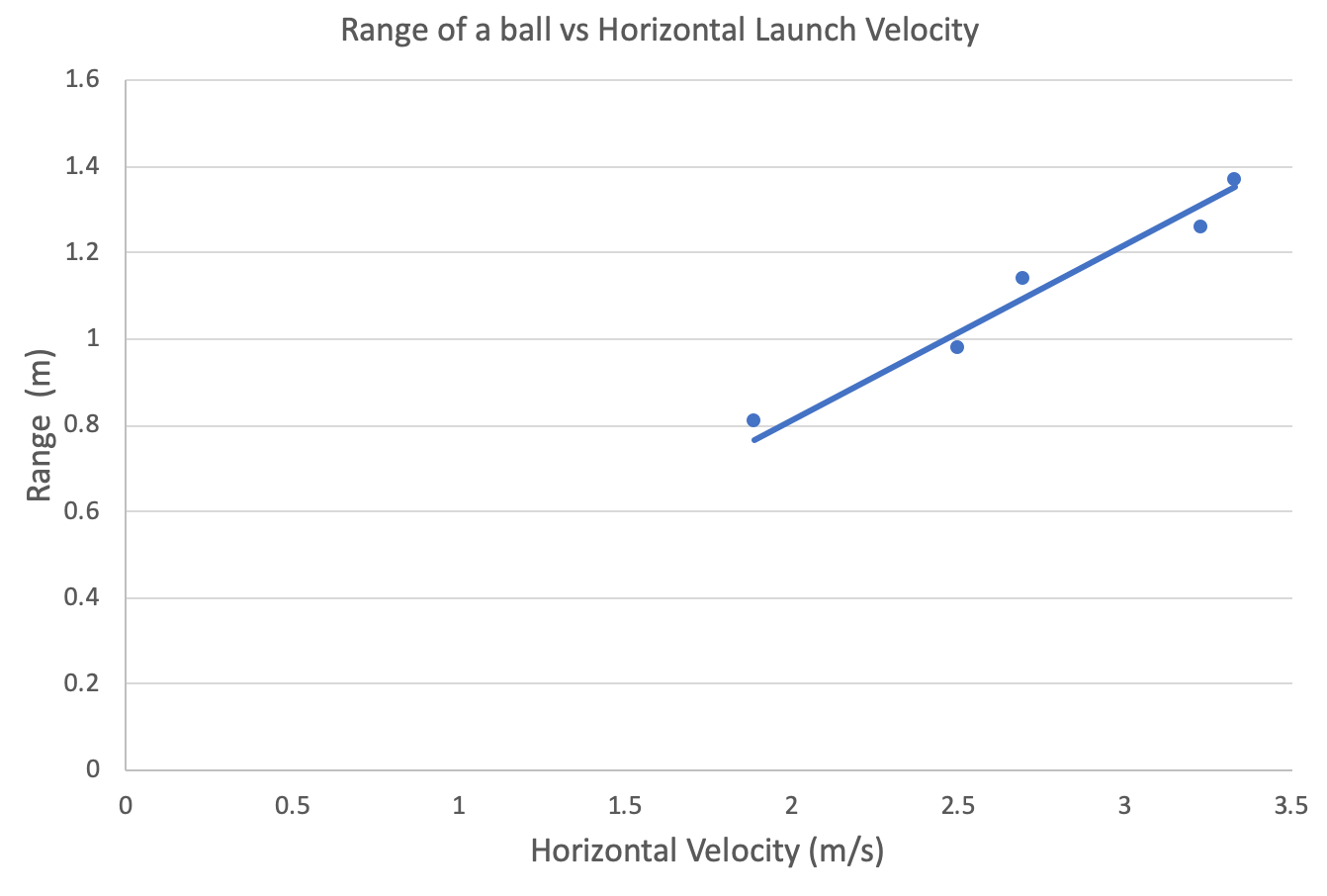Year 12 Physics Practical Investigation | Projectile Motion Experiment
Sample Physics Practical Assessment Task: Projectile Motion Experiment
Projectile motion experiment is used by most schools for their first Physics practical assessment task. This is because most Projectile Motion practical investigation is relatively easy to design and conduct by students.
A typical Projectile Motion practical assessment task used by schools is outlined below.
Task titleTask 1 of 4 Open-Ended Investigation Report on Projectile Motion from Module 5 Advanced Mechanics. Task weighting20% of Overall school assessment Description of Assessment Task
|
In this sample practical assessment task, we are required to investigate the relationship between the range s_x and the launch velocity of a projectile released from an elevated position.
Let’s apply the scientific method to design and conduct a practical investigation for the assessment task outlined above.
Sample Physics Practical Report
1. Theory
The simplest type of projectile motion is a ball being projected horizontally from an elevated position.

In this situation, the range of a projectile is dependent on the time of flight and the horizontal velocity. Hence this experiment is based on the equation s_x=u_xt .
To express the time of flight t in terms of the acceleration due to gravity, we analyse the vertical motion of the projectile
s_y=u_yt+\frac{1}{2}at^2
-h=0+\frac{1}{2}(-g)t^2
t^2=\frac{2h}{g}
t=\sqrt{\frac{2h}{g}}
Hence the range of a projectile can be expressed in terms of the horizontal velocity and the other control variables such as y and g by substituting t=\sqrt{\frac{2h}{g}} expression into s_x=u_xt :
s_x=u_xt
s_x = u_x \times (\sqrt{\frac{2h}{g}})
\therefore s_x = (\sqrt{\frac{2h}{g}}) u_x
2. Variables
Before designing your investigation, all the variables need to be identified.
- Independent variable: Horizontal launch velocity u_x
- Dependent variable: Range \Delta x
- Control variables: Height of the table y, acceleration due to gravity g, the shape of the projectile
Keeping the control variables constant allows the experiment to be more valid.
To learn more about how to improve the validity of your experiment, read the Matrix blog on ‘Validity, Reliability and Accuracy of Experiments‘
3. Aim
To determine the relationship between the range of a projectile \Delta x and its horizontal launch velocity u_x and use the results to calculate the acceleration due to gravity g .
4. Method
- The apparatus is set up as shown in the diagram below.

- A smooth metal ball is placed at the top of the ramp, and the vertical distance from the ball to the table is measured.
- The ball is rolled down and timed along the 1 \ m horizontal length using a stopwatch. The time is recorded.
- The distance from the foot of the table to its landing point on the carbon paper is observed, measured and recorded.
- Steps 1-4 are then repeated at different heights up the ramp.
5. Results
The results are given in the table below. Using the times taken for the ball to travel 1 metre. Data collected from the experiment is highlighted in blue.
| Vertical height on ramp \Delta h \ (m) | Time to travel 1 \ m \ (s) | Range \Delta x \ (m) |
| 0.6 | 0.30 | 1.37 |
| 0.5 | 0.31 | 1.26 |
| 0.4 | 0.37 | 1.14 |
| 0.3 | 0.40 | 0.98 |
| 0.2 | 0.53 | 0.81 |
6. Quantitative Analysis of Results: Graphs and calculations
Calculate the horizontal velocity of the ball as it leaves the table and hence complete the table.
| Vertical height on ramp \Delta h \ (m) | Time to travel 1 \ m \ (s) | Launch velocity u_x \ (ms^{-1}) | Range \Delta x \ (m) |
| 0.6 | 0.30 | u_x = \frac {s_x}{ t} u_x= \frac{1}{0.30} = 3.33 | 1.37 |
| 0.5 | 0.31 | u_x= \frac{1}{0.31} = 3.23 | 1.26 |
| 0.4 | 0.37 | u_x= \frac{1}{0.37} = 2.70 | 1.14 |
| 0.3 | 0.40 | u_x= \frac{1}{0.40} = 2.50 | 0.98 |
| 0.2 | 0.53 | u_x= \frac{1}{0.53} = 1.89 | 0.81 |
Plot the range of the ball \Delta x against the launch velocity u_x and draw in the line of best fit.
- The range of the ball is plotted against the horizontal launch velocity.

- A line of best fit is drawn.
Determine the relationship between the launch velocity u_x and the range of the ball \Delta x and hence discuss its significance
- The relationship between the launch velocity and the range of the ball is linear. The range of the ball is directly proportional to the horizontal launch velocity: s_x = u_x \times t
- The linear relationship implies that the horizontal launch velocity affects the range but not the time taken to fall from a fixed height. Therefore horizontal and vertical motions are independent of each other.
- This also validates the results expected from the equations of projectile motion.
Use the gradient to find the acceleration due to gravity
| Action | Detail |
| Step 1: Find the gradient of the line of best fit. |
|
| Step 2: Identify the variables |
|
| Step 3: Rewrite \Delta x = (t) u_x in the form y = (k)x to determine the relationship between the dependent, independent and control variables. | \Delta x = u_x t \Delta x = (t) u_x \Delta x = (\sqrt{\frac{2H}{g}}) u_x |
| Step 4: Write the gradient in terms of control variables. | Since \Delta x is directly proportional to u_x , the gradient equals to \sqrt{\frac{2H}{g}} |
| Step 5: Find the unknown in the control variable. | Using the launch height y = 0.7 m and the gradient, determine the acceleration due to gravity g. gradient = \sqrt{\frac{2H}{g}} g= {\frac{2H}{(gradient)^2}} g= {\frac{2 \times 0.7}{(0.4)^2}} g= 8.75 ms^{-2} The acceleration due to gravity is -8.75 ms^{-2} downwards. |
7. Qualitative Analysis: Evaluation of method and errors
Let’s investigate the errors, reliability and accuracy of this experiment.
| Question | Answer |
| How would you determine if the results are reliable? |
|
| Suggest a method of improving the reliability of your results. |
|
| What are some potential errors in this experiment? How can these errors be reduced? | The main errors experienced in this experiment are:
|
| If a foam ball or Ping-Pong ball was used instead of the metal ball, what would happen to the range and the value of g obtained? |
|
| Would the use of the ping-pong ball affect accuracy, reliability and/or validity? Justify your answer. |
|
Access our library of Physics Practical Investigations.
Get free access to syllabus specific Physics Practicals written by expert HSC teachers. Join 10000+ students who are getting ahead with Learnable. Try for free now.

Learnable Education and www.learnable.education, 2019. Unauthorised use and/or duplications of this material without express and written permission from this site's author and/or owner is strictly prohibited. Excerpts and links may be used, provided that full and clear credit is given to Learnable Education and www.learnable.education with appropriate and specific direction to the original content.